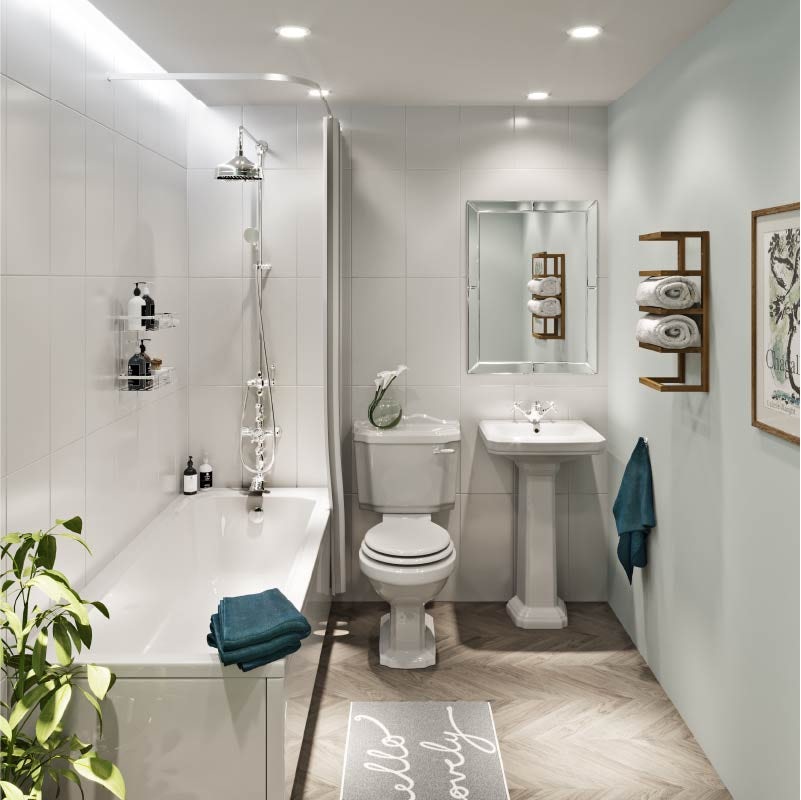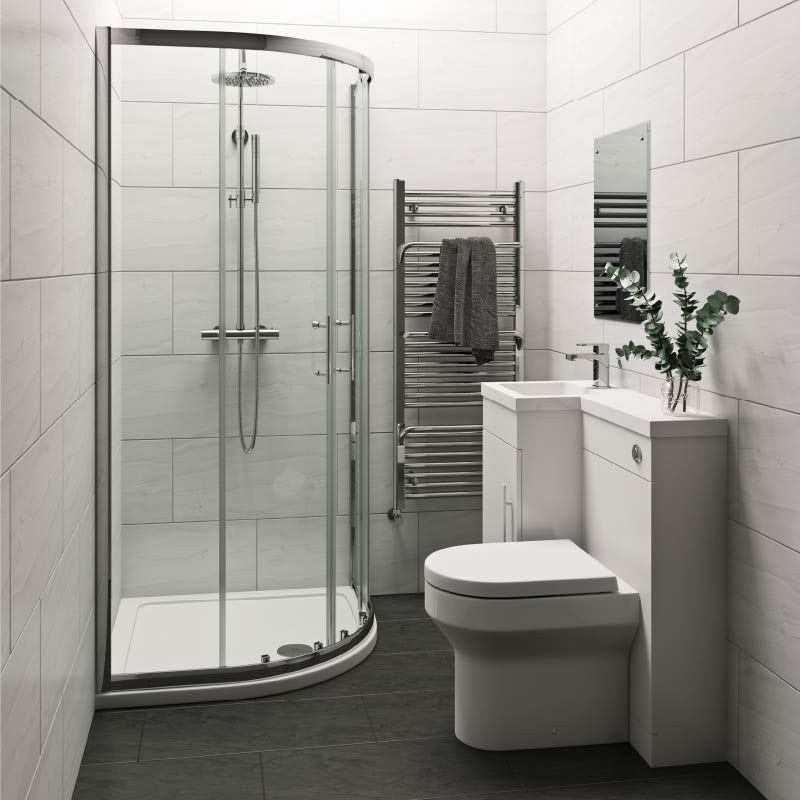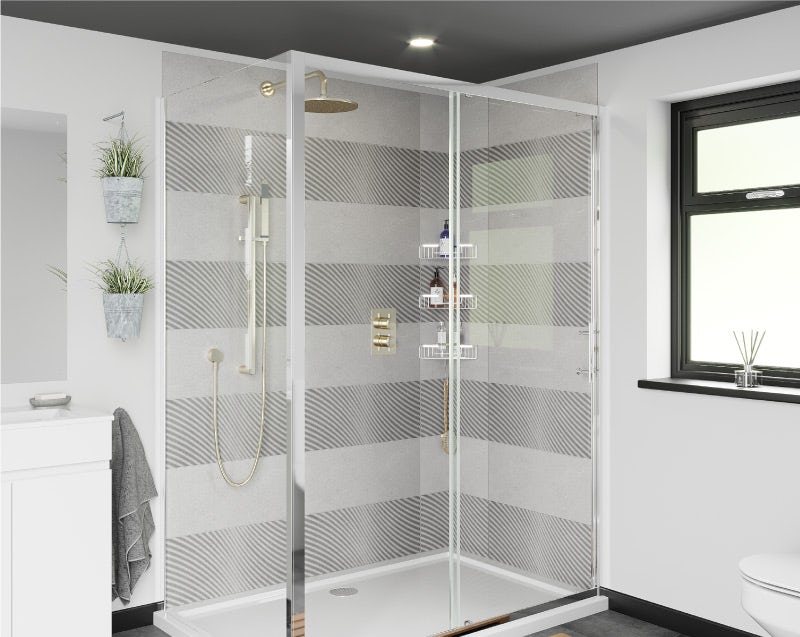Worried about potential mould in your bathroom? Is bathroom paint the answer? Read on for helpful advice...
Introduction
Humidity in the bathroom is a common occurrence. This is usually due to the fact that taking a shower or bath creates a significant quantity of steam, raising the saturation in the space. Mould development can result from wet air condensing on walls in a poorly ventilated area.
One method of prevention is anti-mould and anti-condensation paints. The best options are often widely discussed and debated but it is universally agreed that good anti-mould growth paint can prevent pesky mould growth on bathroom walls, especially on the interior walls and ceilings.
Walls in bathrooms are susceptible to moisture. This includes surfaces, roofs and openings. Unhygienic bacteria is a result of this extra humidity. Mould in tiny quantities is safe, but persistent contact may cause unwanted health issues.
Why is mould dangerous in a bathroom?
In bathrooms, fungus may appear thanks to the damp conditions. Fungus not only has an awful appearance and stench, but it may also be hazardous to your well-being and can be difficult to get rid of.
Spots of black fungus will make your shower or bathing space appear unsightly, particularly given that your bathroom or ensuite is supposed to be sanitary and hygienic. If you've been subjected to mould over an extended period of time, it can also be extremely hazardous to your well-being.
Mould may be harming you without realising as it can grow from out of sight (underneath a basin or a window ledge, for instance). Toilet spaces are constantly hot and moist, which allows the fungus to grow quickly.
Health consequences of fungus
The negative impacts of fungus can be unexpectedly severe. A fungal microbiological organism is basically a live thing that, as it develops, begins to release harmful gas particles. Allergic reactions, eye irritation, allergies, coughing, disorientation and sickness can all result from contact with mould particles. For people who already have compromised health, the lengthy consequences of mould contact may be more significant.
Ways to avert fungus in lavatories
Moisture absorption must be managed and reduced in order to avoid mildew in bathrooms. Enhanced air circulation is the most effective approach for accomplishing this. Whenever you bathe or shower, you may also be able to do a few easy things to lessen the dampness in the air.
You'll see water molecules on openings sills with enamel paint if your bathroom has penetrating damp. Additionally, you'll see dark-coloured mould growing on various surfaces. The same paint, the mould-resistant paint could end up being helpful to remove mould spores, and anti-mould wash can kill mould and prevent mould growth.
To apply, use a stiff bristle brush and scrub the tile grout and the surface of the regular paint for bathrooms to lower black mould growth and work towards a soft sheen finish.
Among the best strategies to manage dampness and get rid of mildew infections in bathrooms is to increase airflow. By eliminating wet gas, extractor fans simultaneously assist in reducing and eliminating contact moisture.
Filtration designs are intended to be used in spaces like bathrooms that have difficulties with mildew and moisture. The neutral concept is applied using displacement ventilation devices, which eliminates the need for power. Energy is used by extracting fans to accomplish the same goals.
Bathroom circulation is essential for avoiding moisture throughout the entire house. Normally, a portion of the wet air produced, whenever you bathe, would travel throughout your house, leading to more significant moisture problems. A bathroom with adequate ventilation will cut down on the quantity of humid air that circulates throughout the remainder of your home. Additionally, cross-ventilating your house is a wise decision. This entails raising windows on the different sides of the house to let clean oxygen into the building.
How to minimise moisture in my bathroom?
You could easily reduce moisture at no cost by altering your activity around the house. If you take these actions, you can lessen the chance of mould...
- While taking a shower, shut the toilet door
- Keep openings open while taking a bath and afterwards, to let the steamy vapour go
- Ensure any extractor fans are switched on when bathing, showering or using hot water
- To eliminate any extra liquid, clean off all walls, especially tiling, lavatories and window frames
- Remove damp towels or bath mats from the floor, since this may encourage the development of mildew and leave a dank, humid odour
- Apply fungus rinse concentration to eliminate all visible fungus right away to stop it from growing again
Prevention of mould paint for bathrooms
Another prevalent factor in the first stages of fungus formation is moisture. Mould may flourish whenever there is excess humidity in the atmosphere and warmth from showering. Thus, preventing dampness is a fantastic method for halting the growth of black mildew.
Although frequent airflow and lowering the amount of atmospheric humidity have been mentioned, there is a technique to prevent mist from happening.
In bathrooms, the floors and surfaces can be painted with moisture-prevention condensation paint. Once this has been added to the walls, it absorbs heat generated from the outer atmosphere. Moisture then takes longer to develop when surfaces are warmer.
Eradicating mould on surfaces
Seeing as it isn't always easy to wash a top surface, disposing of mildew on bathroom surfaces can be challenging. The painting could have begun to peel and be damaged by the fungus. It's usually advisable to utilise expert mildew eradication equipment, despite the fact that there is plenty of advice for homebrew remedies utilising common ingredients.
While fungus removal from washroom flooring is easier compared to a vaulted surface, the operation nevertheless requires care. Every gap provides the ideal environment for fungus to flourish, as opposed to the flooring's dry layer.
Applying the mildew rinse concentration vigorously with a cloth is recommended. After 1 hour, rinse thoroughly. Use a respirator and protective goggles when performing this task and ensure it is sufficient for airflow.
FAQs about bathroom paint
If you have a query about bathroom paint, we've compiled just a few of the most frequently asked questions along with answers.
Is bathroom paint different?
Yes, bathroom paint can be different from paint used in other areas of the home. Bathroom paint is specifically designed to withstand the unique conditions found in bathrooms, such as high humidity, moisture and frequent temperature changes. Here are a few characteristics that differentiate bathroom paint:
-
Moisture and humidity resistance—Bathroom paint is formulated to resist moisture and humidity, which helps prevent the growth of mould, mildew and other types of water damage. It typically contains additives that create a more durable and moisture-resistant surface.
-
Mould and mildew resistance—Many bathroom paints have mould and mildew inhibitors incorporated into their formulation. These additives help inhibit the growth of mould and mildew, which is especially important in bathrooms where moisture levels are higher.
-
Easy to clean—Bathroom paint is often designed to be more washable and resistant to stains, allowing for easier cleaning. This is beneficial in a bathroom environment where splashes, spills and stains are common.
-
Durability—Bathrooms are frequently used spaces, and the paint needs to withstand regular cleaning, scrubbing and general wear and tear. Bathroom paint is typically more durable and can withstand repeated cleaning without easily wearing off or losing its colour.
When choosing bathroom paint, look for labels or descriptions that specifically indicate its suitability for bathrooms or high-moisture areas. It's important to follow the manufacturer's instructions regarding application, drying time and recommended number of coats to ensure optimal performance.
In addition to using bathroom-specific paint, it's also crucial to address any underlying moisture issues, improve ventilation and properly maintain the bathroom to minimise the risk of mould and mildew growth.
Is bathroom paint waterproof?
While bathroom paint is designed to be more resistant to moisture and humidity than regular paint, it is important to note that it is not completely waterproof. Bathroom paint can withstand typical levels of moisture found in bathrooms, such as steam from showers or occasional splashes, but it is not intended to be submerged or constantly exposed to water.
Bathroom paint is formulated to resist moisture and provide a protective barrier against the effects of high humidity. It often contains additives like mildewcides and moisture-resistant properties to help prevent the growth of mould and mildew. However, if water is consistently present on the painted surface, such as on the walls surrounding a bath or shower enclosure, the paint may eventually deteriorate, peel or become damaged.
To ensure the best performance of bathroom paint and minimise water-related issues, it is important to maintain good ventilation, use extractor fans or open windows during and after showering, and promptly address any water leaks or excessive moisture in the bathroom. Regular cleaning and maintenance, such as wiping down wet surfaces and promptly drying them, can also help prolong the lifespan of your bathroom paint.
If you have areas in your bathroom that are constantly exposed to water, such as shower walls, it is advisable to use other waterproof materials, such as tiles, shower wall panels, or specialised waterproof coatings designed for those specific areas. These materials provide a more reliable and durable waterproofing solution compared to bathroom paint alone.
Is bathroom paint worth it?
Using bathroom paint in your bathroom can be worth it for several reasons. Here are some benefits of using bathroom paint in a bathroom environment:
-
Moisture and mould resistance: Bathroom paint is specifically formulated to resist moisture and humidity, which are common in bathrooms. Its moisture-resistant properties help prevent the growth of mould and mildew, reducing the risk of health issues and maintaining a cleaner and healthier bathroom environment.
-
Durability: Bathroom paint is designed to withstand the rigours of bathroom use. It is typically more durable and can withstand regular cleaning, scrubbing and exposure to mild bathroom chemicals without easily wearing off or losing its colour. This durability helps maintain the appearance of your bathroom walls over time.
-
Easy to clean: Bathroom paint is often more washable and resistant to stains compared to regular paint. It can be easily cleaned using mild soap and water, allowing you to maintain a fresh and clean look in your bathroom without worrying about damaging the paint.
-
Appearance: Bathroom paint comes in a variety of colours and finishes, allowing you to choose a style that complements your bathroom decor. It provides a polished and finished appearance to your bathroom walls, enhancing the overall look of the space.
While bathroom paint offers these advantages, it's important to realise that it is not a foolproof solution to all bathroom-related issues. Proper ventilation, addressing underlying moisture problems and regular maintenance are still important for a healthy and well-maintained bathroom.
Ultimately, the decision to use bathroom paint depends on your personal preferences, the specific conditions of your bathroom and your budget. If you value the benefits mentioned above and want to ensure your bathroom walls are protected in a high-moisture environment, investing in bathroom paint can be a worthwhile choice.
Conclusion
If you're able to detect mildew but do not find it, look in concealed places including attics, ventilation systems, beneath doors, basins, lavatories and bathtubs, in showerheads, and in showering fittings. It can begin silently in the bathroom before moving on to other areas. The greatest approach to treating mildew is to avoid it from spreading in the first place.
More expert advice for your bathroom
No matter how big or small your bathroom issue may be, we have plenty of expert advice that will help keep your bathroom in great shape. Check out all our latest bathroom tips and tricks and achieve your own Little Bathroom Victories.






